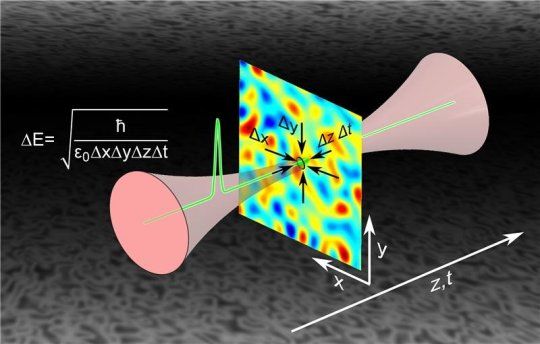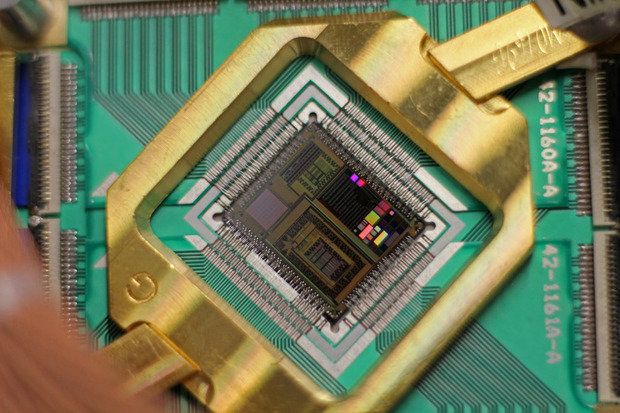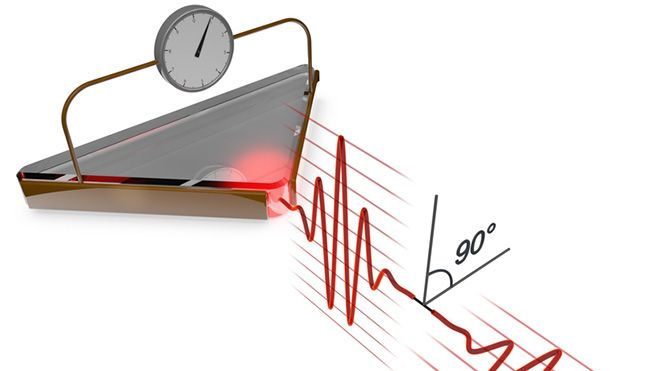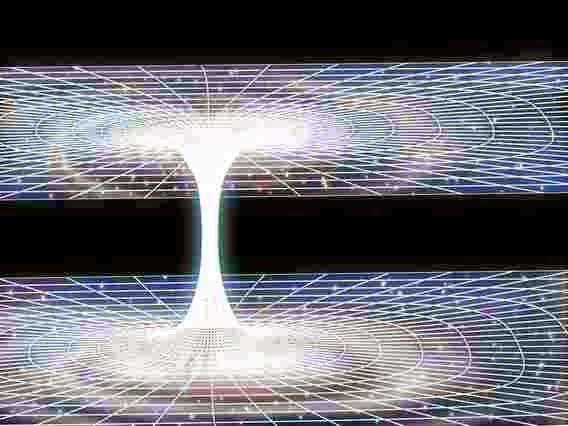What are the properties of the vacuum, the absolute nothingness? So far, physicists have assumed that it is impossible to directly access the characteristics of the ground state of empty space. Now, a team of physicists led by Prof. Alfred Leitenstorfer at the University of Konstanz (Germany) has succeeded in doing just that. They demonstrated a first direct observation of the so-called vacuum fluctuations by using short light pulses while employing highly precise optical measurement techniques. The duration of their light pulses was ensured to be shorter than half a cycle of light in the spectral range investigated. According to quantum physics, these oscillations exist even in total darkness, when the intensity of light and radio waves completely disappears. These findings are of fundamental importance for the development of quantum physics and will be published in the journal Science; an advance online version has appeared on October 1, 2015.
The existence of vacuum fluctuations is already known from theory as it follows from Heisenberg’s uncertainty principle, one of the main pillars of quantum physics. This principle dictates that electric and magnetic fields can never vanish simultaneously. As a consequence, even total darkness is filled with finite fluctuations of the electromagnetic field, representing the quantum ground state of light and radio waves. However, until now direct experimental proof of this basic phenomenon has been considered impossible. Instead, it is usually assumed that vacuum fluctuations are manifested in nature only indirectly. From spontaneous emission of light by excited atoms e.g. in a fluorescent tube to influences on the structure of the universe during the Big Bang: these are just some of the instances that highlight the ubiquitous role the concept of vacuum fluctuations plays in the modern physical description of the world.
An experimental setup to measure electric fields with extremely high temporal resolution and sensitivity has now made it possible to directly detect vacuum fluctuations, despite all contrary assumptions. World-leading optical technologies and ultrashort pulsed laser systems of extreme stability provide the know-how necessary for this study. The research team at the University of Konstanz developed these technologies in-house and also an exact description of the results based on quantum field theory. The temporal precision achieved in their experiment is in the femtosecond range — a millionth of a billionth of a second. The sensitivity is limited only by the principles of quantum physics. “This extreme precision has enabled us to see for the first time that we are continuously surrounded by the fields of electromagnetic vacuum fluctuations” sums up Alfred Leitenstorfer.


















